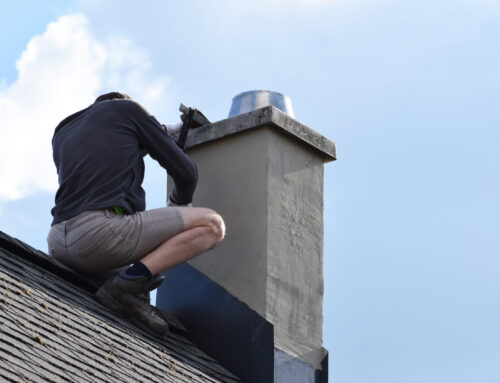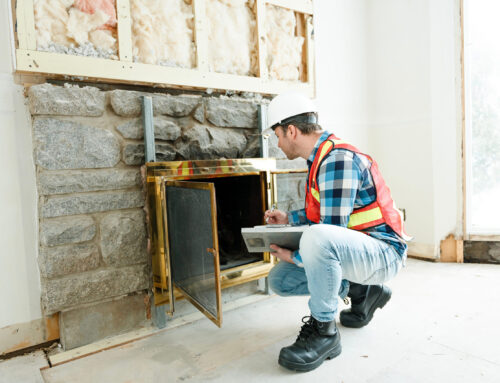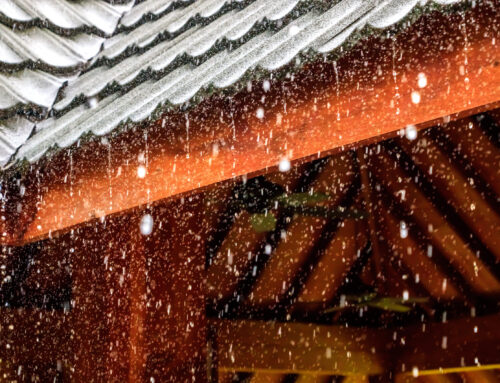
Is It Safe to Use My Fireplace Without a Chimney Cap? The Risks Explained for 2024
As the chill of 2024 sets in, many of us in northeast Illinois are looking forward to cozy nights by the fireplace. But before you light that first fire, have you checked whether your chimney has a cap? You might be wondering, “Is it safe to use my fireplace without a chimney cap?” The simple answer is: not really. Let’s dive into the reasons why skipping this small but essential piece of your chimney system could lead to big problems this year.
What Exactly Is a Chimney Cap, and Why Does It Matter?
A chimney cap is a metal cover that sits on top of your chimney. It might seem like an optional accessory, but it plays a crucial role in protecting your home. In 2024, with unpredictable weather patterns and wildlife activity on the rise in northeast Illinois, having a chimney cap installed is more important than ever.
Protecting Your Chimney from the Elements
One of the biggest risks of not having a chimney cap is water damage. Rain, snow, and even sleet can enter an uncapped chimney, leading to moisture buildup. This can cause the interior walls of your chimney to weaken, the mortar to erode, and eventually lead to costly repairs. With the increased likelihood of severe weather this year, keeping water out of your chimney is essential.
Imagine the damage that can occur when water seeps into the bricks and mortar of your chimney. As temperatures drop, this moisture can freeze, causing the material to expand and crack. Over time, these small cracks can lead to significant structural issues, potentially even resulting in a chimney collapse. In 2024, with more intense freeze-thaw cycles expected in northeast Illinois, the risks are even greater.
Bullet Points on Water Damage:
- Moisture buildup can lead to mold growth inside the chimney.
- Freezing and thawing cycles can cause cracks in the chimney structure.
- Over time, water damage can lead to a complete chimney collapse.
Wildlife Invasion: Not Just a 2024 Problem
Without a chimney cap, your chimney is an open invitation for birds, squirrels, and other wildlife to take up residence. These animals can block the chimney with nests, causing dangerous smoke buildup in your home. Worse, if they get trapped, the situation could lead to a fire hazard or even carbon monoxide poisoning.
In 2024, the increase in wildlife activity due to changes in their natural habitats has made this an even more pressing issue. A simple chimney cap installation can prevent these unwanted visitors from turning your fireplace into their new home.
Consider this: A bird builds a nest in your chimney, blocking the flue. When you light a fire, the smoke has nowhere to go but back into your home. This not only fills your living space with smoke but can also lead to carbon monoxide poisoning—a silent, odorless threat that can be fatal. Installing a chimney cap is a simple solution to prevent such dangerous scenarios.
The Role of a Chimney Cap in Preventing Downdrafts
Ever had smoke blow back into your home instead of up and out of the chimney? That’s called a downdraft, and it’s not just annoying—it can be dangerous. Downdrafts happen when outside air pushes smoke back down your chimney and into your living space. In 2024, with the increased frequency of strong winds in northeast Illinois, this problem is becoming more common.
A chimney cap with a proper draft shield can significantly reduce the chances of downdrafts. This means you can enjoy your fireplace without worrying about smoke ruining your cozy atmosphere—or your lungs.
Downdrafts are more than just an inconvenience. They can cause serious health problems, particularly for those with respiratory issues. Inhaling smoke from a downdraft can lead to coughing, shortness of breath, and other respiratory distress. By installing a chimney cap, you create a barrier that helps maintain proper airflow, ensuring that smoke exits your home as intended.
Keeping Debris Out of Your Chimney
In 2024, with trees growing larger and shedding more leaves, debris is a bigger concern than ever. An uncapped chimney can quickly fill with leaves, twigs, and other debris. This can block the chimney and prevent smoke from escaping, leading to dangerous situations like chimney fires.
A chimney cap acts as a barrier, preventing debris from entering and ensuring that your chimney functions properly throughout the year. It’s a small investment that can save you from a potentially catastrophic event.
Think about it: A single spark from a fire can ignite dried leaves or twigs inside your chimney, causing a fire that could spread to the rest of your home. With 2024 bringing more severe weather conditions, the likelihood of debris accumulation is higher, making a chimney cap even more essential for maintaining safety.
The Financial Implications of Skipping a Chimney Cap
You might be tempted to skip chimney cap installation to save a few bucks, but this decision could cost you much more in the long run. Repairing water damage, removing wildlife, and cleaning out debris can add up to thousands of dollars. In 2024, with inflation affecting repair costs in northeast Illinois, those expenses could be even higher.
Consider the cost of repairing a chimney that has suffered water damage, removing a bird’s nest that has blocked your flue, or cleaning out a chimney fire caused by debris buildup. Each of these scenarios can run into the thousands of dollars. A chimney cap, on the other hand, is a relatively inexpensive solution that can prevent all of these issues.
Ensuring Your Fireplace’s Longevity
Your fireplace is a significant investment in your home, and like any investment, it needs protection. A chimney cap extends the life of your chimney by keeping out the elements, animals, and debris that can cause damage. With the unpredictable weather patterns and environmental changes we’re experiencing in 2024, taking this precaution is more critical than ever.
Think of a chimney cap as a form of insurance for your fireplace. By preventing water damage, blocking wildlife, and keeping out debris, a chimney cap helps maintain the structural integrity of your chimney. This means you can enjoy your fireplace for many more years to come without worrying about costly repairs or dangerous situations.
The Bottom Line: Get a Chimney Cap Installed Today
So, is it safe to use your fireplace without a chimney cap? The answer is a resounding no. The risks—water damage, wildlife invasion, downdrafts, and debris buildup—are just too great. In 2024, these risks are amplified by changing weather and environmental conditions, making chimney cap installation not just a good idea, but a necessity.
If your chimney isn’t capped, don’t wait until it’s too late. Contact Elite Chimney today to schedule a chimney cap installation. We serve northeast Illinois and are committed to keeping your home safe, warm, and cozy throughout the year. Visit our website or give us a call to learn more about our services and to get your chimney ready for the cold months ahead.





